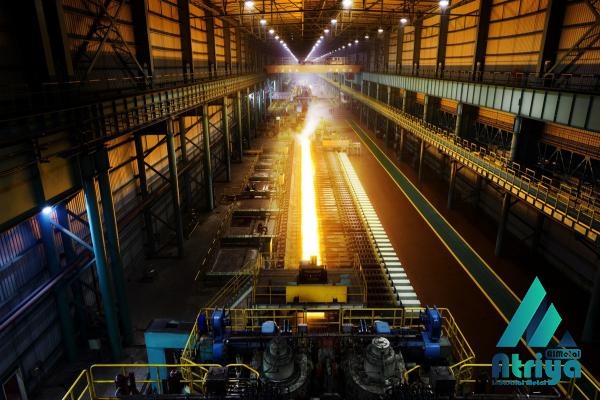Steel mill scale refers to the flaky residue that forms on the surface of hot steel when it is exposed to oxygen and moisture in the manufacturing process. This residue primarily consists of iron oxides, namely magnetite (Fe3O4) and hematite (Fe2O3), along with other minor components. Understanding the chemical composition of steel mill scale is crucial for various industrial applications, including its potential as a valuable resource for recycling and reuse. In this summary, we will delve into the key constituents of steel mill scale and explore how its chemical composition impacts its properties and potential applications. Chemical Composition of Steel Mill Scale: The chemical composition of steel mill scale can vary depending on numerous factors such as the type of steel produced, the manufacturing process, and the conditions under which scale is formed.
iron
 However, the essential components present in mill scale include iron, oxygen, and several trace elements. The primary constituents are magnetite (Fe3O4) and hematite (Fe2O3), which make up the majority of the scale. 1. Iron (Fe): Iron is the major component of steel mill scale. It can be present in various forms, but magnetite (Fe3O4) and hematite (Fe2O3) are the most predominant iron oxides found in mill scale. The iron content in mill scale varies, with typical concentrations ranging from 65% to 72%. The presence of iron makes mill scale a potential source of iron for industrial applications, including iron and steel production. 2. Oxygen (O): Oxygen is a crucial element found in steel mill scale due to its interaction with iron during the manufacturing process.
However, the essential components present in mill scale include iron, oxygen, and several trace elements. The primary constituents are magnetite (Fe3O4) and hematite (Fe2O3), which make up the majority of the scale. 1. Iron (Fe): Iron is the major component of steel mill scale. It can be present in various forms, but magnetite (Fe3O4) and hematite (Fe2O3) are the most predominant iron oxides found in mill scale. The iron content in mill scale varies, with typical concentrations ranging from 65% to 72%. The presence of iron makes mill scale a potential source of iron for industrial applications, including iron and steel production. 2. Oxygen (O): Oxygen is a crucial element found in steel mill scale due to its interaction with iron during the manufacturing process.
Specifications of iron
 The iron oxides formed, such as magnetite and hematite, mainly consist of iron and oxygen atoms. Oxygen content in mill scale can range from 17% to 20%. Understanding the oxygen content is vital as it affects the chemical and physical properties of the scale. 3. Trace Elements: In addition to iron and oxygen, steel mill scale can contain trace elements that may vary depending on the source of the scale. These trace elements include manganese (Mn), silicon (Si), aluminum (Al), chromium (Cr), nickel (Ni), and copper (Cu). The concentrations of these elements are relatively low compared to iron and oxygen but can influence the properties and potential applications of mill scale. Properties and Applications: The chemical composition of steel mill scale directly affects its properties, making it suitable for several industrial applications. Some key properties and potential applications of mill scale include: 1. Magnetic Properties: Due to the significant presence of magnetite (Fe3O4), steel mill scale exhibits magnetic properties. This characteristic makes it useful for various applications, such as magnetic separation processes in the recycling and waste management industries. 2. Thermal Properties: Steel mill scale possesses thermal properties related to its iron oxides content. It is capable of retaining heat and has resistance to thermal degradation. These properties can be advantageous in applications such as thermal insulation materials and refractory bricks. 3. Ferrous Metal Production: The iron content in steel mill scale presents an opportunity for its recycling and utilization in the production of ferrous metals, including steel. By processing and refining mill scale, it can be used as a valuable source of iron in the steelmaking industry, reducing the reliance on primary iron ore.
The iron oxides formed, such as magnetite and hematite, mainly consist of iron and oxygen atoms. Oxygen content in mill scale can range from 17% to 20%. Understanding the oxygen content is vital as it affects the chemical and physical properties of the scale. 3. Trace Elements: In addition to iron and oxygen, steel mill scale can contain trace elements that may vary depending on the source of the scale. These trace elements include manganese (Mn), silicon (Si), aluminum (Al), chromium (Cr), nickel (Ni), and copper (Cu). The concentrations of these elements are relatively low compared to iron and oxygen but can influence the properties and potential applications of mill scale. Properties and Applications: The chemical composition of steel mill scale directly affects its properties, making it suitable for several industrial applications. Some key properties and potential applications of mill scale include: 1. Magnetic Properties: Due to the significant presence of magnetite (Fe3O4), steel mill scale exhibits magnetic properties. This characteristic makes it useful for various applications, such as magnetic separation processes in the recycling and waste management industries. 2. Thermal Properties: Steel mill scale possesses thermal properties related to its iron oxides content. It is capable of retaining heat and has resistance to thermal degradation. These properties can be advantageous in applications such as thermal insulation materials and refractory bricks. 3. Ferrous Metal Production: The iron content in steel mill scale presents an opportunity for its recycling and utilization in the production of ferrous metals, including steel. By processing and refining mill scale, it can be used as a valuable source of iron in the steelmaking industry, reducing the reliance on primary iron ore.
buy iron
 4. Cement and Concrete Applications: Steel mill scale can be incorporated into cement and concrete mixtures as an additive. The iron oxide content in mill scale contributes to the enhancement of mechanical properties, such as increased strength and durability. It also improves the resistance to chloride penetration and reduces the risk of corrosion in concrete structures. 5. Soil Remediation: Mill scale has been used in soil remediation methods due to its iron oxide content and the potential ability to stabilize heavy metals in contaminated soils. It can aid in the immobilization and remediation of soil contaminated with heavy metals, reducing their bioavailability and environmental impact. Conclusion: Understanding the chemical composition of steel mill scale is crucial for evaluating its properties and potential applications. The primary components, magnetite (Fe3O4) and hematite (Fe2O3), along with trace elements, determine the scale’s characteristics and suitability for various industrial uses. As a valuable resource, mill scale can contribute to the recycling and reuse of iron, cement and concrete production, thermal applications, and soil remediation methods. By harnessing its properties and exploring innovative approaches, the utilization of steel mill scale can lead to sustainable and environmentally friendly practices in various industries.
4. Cement and Concrete Applications: Steel mill scale can be incorporated into cement and concrete mixtures as an additive. The iron oxide content in mill scale contributes to the enhancement of mechanical properties, such as increased strength and durability. It also improves the resistance to chloride penetration and reduces the risk of corrosion in concrete structures. 5. Soil Remediation: Mill scale has been used in soil remediation methods due to its iron oxide content and the potential ability to stabilize heavy metals in contaminated soils. It can aid in the immobilization and remediation of soil contaminated with heavy metals, reducing their bioavailability and environmental impact. Conclusion: Understanding the chemical composition of steel mill scale is crucial for evaluating its properties and potential applications. The primary components, magnetite (Fe3O4) and hematite (Fe2O3), along with trace elements, determine the scale’s characteristics and suitability for various industrial uses. As a valuable resource, mill scale can contribute to the recycling and reuse of iron, cement and concrete production, thermal applications, and soil remediation methods. By harnessing its properties and exploring innovative approaches, the utilization of steel mill scale can lead to sustainable and environmentally friendly practices in various industries.











Your comment submitted.